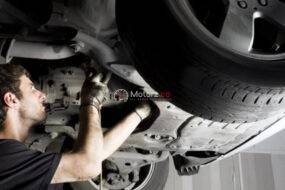Transmission Slipping Explain Symptoms And Possible Solutions. can be a perplexing and frustrating issue for any vehicle owner. This phenomenon occurs when there is an unexpected change in gear during driving, causing a temporary loss of power and acceleration. In this article, we will explore the symptoms of transmission slipping and delve into the possible solutions to address this common automotive concern.
RPM Fluctuations:
Transmission Slipping One of the primary indicators of transmission slipping is a sudden and unexplained increase in engine RPM (revolutions per minute) without a corresponding increase in vehicle speed. This can give the sensation that the transmission is struggling to engage properly. A transmission in good condition should shift smoothly between gears. If you notice delays or a jolting sensation during gear changes, it could be a sign of transmission slipping.
Unusual Noises:
Strange noises, such as whining, clunking, or grinding sounds, while the vehicle is in gear can point to transmission issues. These noises may indicate internal components are not functioning as they should.
Overheating:
Transmission slipping can generate excess heat, leading to overheating of the transmission fluid. Keep an eye on the temperature gauge, as overheating can further damage internal components.
Burning Smell:
A distinct burning door emanating from the engine compartment could indicate overheated transmission fluid. This smell is a cause for concern and should be addressed promptly.
Check Transmission Fluid Levels:
Low transmission fluid levels are a common cause of slipping. Regularly check the fluid levels according to the manufacturer’s recommendations and top off as needed. Ensure that the fluid is clean and not burnt, as burnt fluid can lead to slipping.
Transmission Fluid Change:
If the transmission fluid is old or contaminated, a fluid change may be necessary. This can help improve the lubrication and cooling properties of the fluid, reducing the risk of slipping. A clogged or dirty transmission filter can impede the flow of fluid, leading to slipping. Replacing the filter during routine maintenance can prevent this issue.
Torque Converter Issues:
The torque converter is a key component in the transmission system. Problems with the torque converter, such as damage or insufficient fluid pressure, can result in slipping. Professional inspection and, if necessary, replacement of the torque converter may be required.
Transmission Solenoid Replacement:
Faulty solenoids, responsible for controlling the flow of transmission fluid, can contribute to slipping. If diagnostics point to a malfunctioning solenoid, replacement may be necessary. For vehicles with manual transmissions, a slipping clutch can mimic the symptoms of automatic transmission slipping. Inspect the clutch system for wear and tear, and replace components as needed.
Professional Diagnostics:
If DIY solutions do not resolve the issue, seeking professional diagnostics is crucial. A trained mechanic can use specialized tools and knowledge to identify and address complex transmission problems.
Conclusion:
Transmission Slipping is a serious concern that, if left unaddressed, can lead to more severe and costly damage. Regular maintenance, fluid checks, and prompt attention to any unusual symptoms can help prevent and mitigate transmission slipping issues. If in doubt, always consult with a qualified automotive professional to ensure the longevity and performance of your vehicle’s transmission system.





